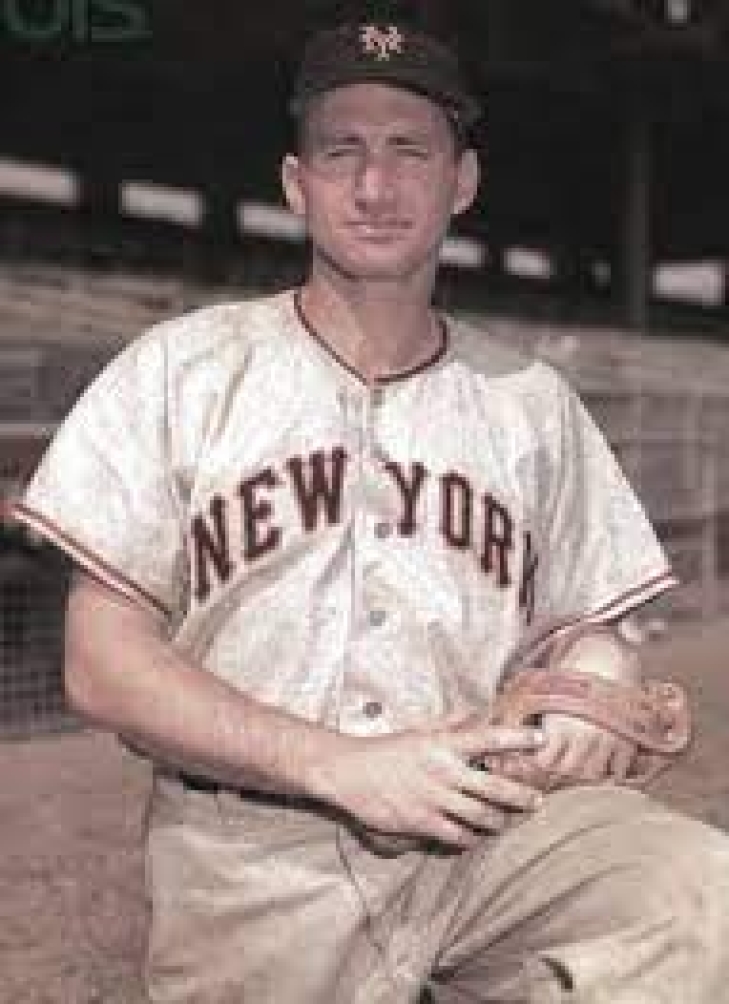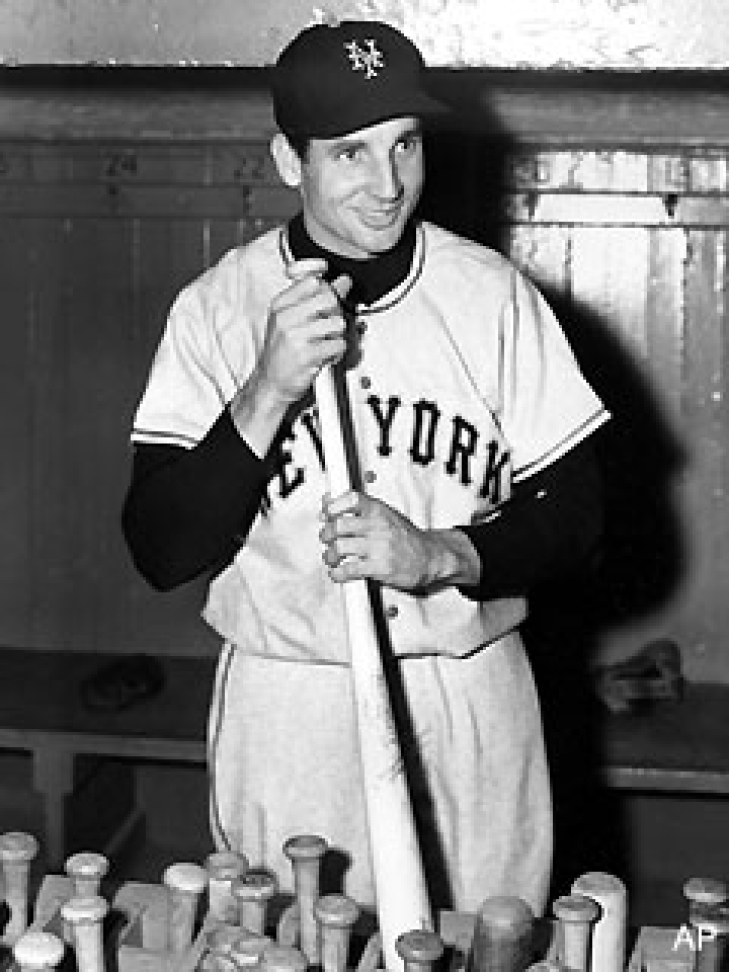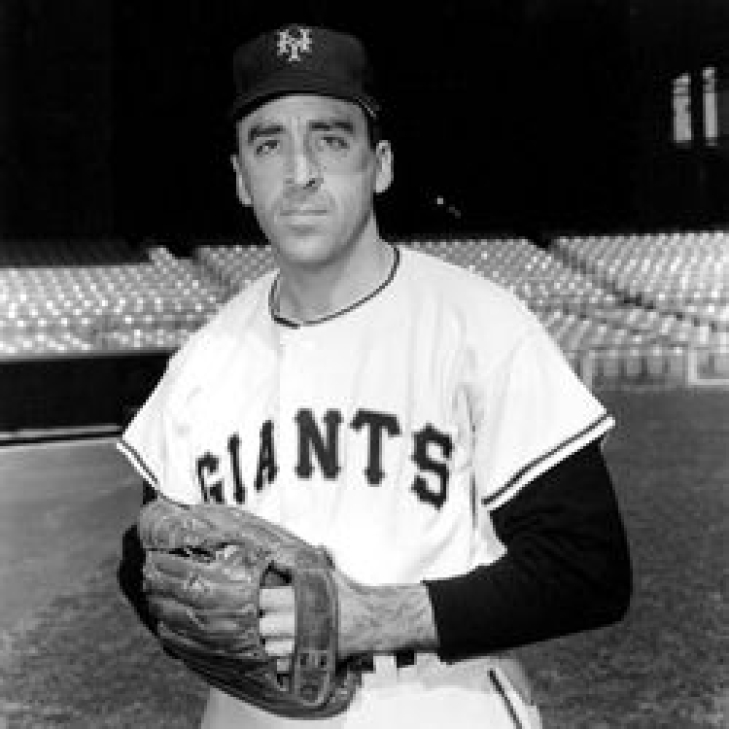
Committee Chairman
41. Al Dark
Al Dark won the 1948 National Rookie of the Year with the Boston Braves, but the slumping Braves dealt the Infielder to the Giants, a move that helped New York elevate to the top rung of the National League standings.
Dark arrived in New York in 1950 and had at least 160 Hits five years in a row. Batting over .300 three times, Dark was also a three-time All-Star and the National League leader in Doubles (41) in 1951. That year, the Giants won the Pennant but not the World Series, though Dark would help lead New York to a Title in 1954. That year, Dark was also fifth in MVP voting.
The popular player was traded to St. Louis during the 1956 Season, but never achieved the success he did as a Giant, where he had 1,106 Hits and a .292 Batting Average.
39. Matt Cain
Matt Cain was a Giant throughout his 13 years of Major League service (2005-17), and despite his losing record (104-118, he was a vital leader of a squad that won three World Series wins in the 2010s.
Cain made it to the Majors in 2005, three years after he was a First Round Pick, and he was immediately plugged into the starting rotation. The fifth-place finisher for the National League Rookie of the Year in 2006 (13-12, 4.15 ERA), Cain had better ERAs in 2007 and 2008, but San Francisco was not yet a contender, and he went 15-30 in those two seasons, but as the Giants got better, so did Cain.
The right-hander was an All-Star in 2009, posting his first sub-three ERA (2.89), and had a 14-8 record. Cain's contribution to the Giants rotation helped them win it all in 2010, and he was 12th in Cy Young voting (13-11 3.14 ERA). The next two years were better for Cain, as he was an All-Star in both those years, and in 2012, he was the 22nd Pitcher to throw a perfect game. Also, a top ten finisher in both years for the Cy Young (8th in 2011 & 6th in 2012), Cain won two decisions in that postseason where the Giants won the World Series again.
2012 ended Cain's peak, as he never had a year with a winning record or an ERA under four again. In his last five years, Cain was a lower-tier Pitcher but still coveted for his leadership. He retired after the 2017 Season, with 1,694 career Strikeouts, and the Giants inducted Cain into their Wall of Fame the year after.
42. Bobby Thomson
"The Giants win the Pennant!" The Giants win the Pennant."
Bobby Thomson became immortalized with that call, as "The Shot Heard 'Round the World" completed the biggest regular season comeback as the Giants rallied from 13 ½ Games back from Mid-August in 1951 to force a three-game playoff. Thomson hit the walk-off Home Run to win Game 3 and the Pennant, and even though New York lost the World Series to the Yankees, it remains among Baseball's most iconic moments.
Of course, Thomson was more than that Home Run, but we had to start there!
Thomson was signed as an Amateur Free Agent before the 1942 Season, but he served three years in the American Military during World War II service. When he returned, he was in the Minors for most of his 1946, before he was called up, and had 154 Hits and 29 Home Runs in his official rookie year of 1947.
Thomson made the following two All-Star Teams, excelling in the latter year with his first 100-RBI (109 RBI, 27 HR) year, with his only .300 season (.309). Thomson remained a solid power hitter, belting at least 24 Home Runs over the next four seasons, the last three seeing him break 100 RBI. The year he hit his most famed Home Run (1951) was his best campaign, with career-highs in Home Runs (31), Triples (14, and league-leading), and he was eighth in MVP voting.
The Giants traded Thomson to the Milwaukee Braves after the 1953 Season, and with the proper respect to Thomson, the timing was good, as he was never an All-Star again. He briefly returned in 1956 but was traded again before the next season began.
As a Giant, Thomson batted .277 with 1,171 Hits and 189 Home Runs.
48. Sal Maglie
Sal Maglie took a long time to establish himself as a Major League Pitcher, but that was not due to a lack of skill.
It took him until the age of 28 to make the big leagues, debuting for the New York Giants in 1945 after four years in their farm system. He did well, going 5-4, but he had an offer to pitch in the Mexican league for more money. Maglie took it but was subsequently banned by the Commissioner for his decision. It was a costly trip South of the Border, as the team, he signed with could not afford him for long, and he was out of the game on a professional level. Five years later, the ban was lifted, and he was back in 1950.
Nicknamed the “Barber” for his penchant for throwing balls close to the batter’s faces, Maglie had an incredible return, winning the ERA Title (2.71) with a stellar 18-4 Record. He was just as good, the next two All-Star appearing seasons, leading the NL in Wins (23) and H/9 (7.7) in 1951, finishing fourth in MVP voting. With Maglie excelling, New York won the 1951 and 1954 Pennant, winning the World Series in 1954.
Back issues took their toll on Maglie, who could not replicate his past success. He was waived by the Giants during the 1956 Season and claimed by Cleveland, and though he was never an All-Star again, he played until 1961.
As a Giant, Maglie went 95 and 42 with an ERA of 3.13.





